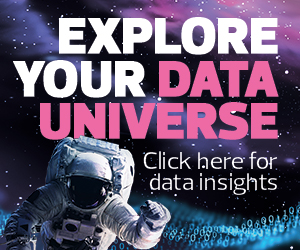Why Is Data Governance Important for State and Local Governments?
Data governance is crucial for state and local governments “not only because we live in a world that is more data-driven than ever, but also because a great deal of confidential information flows through these institutions’ operational systems,” Rowan says.
Given the high value of state-held data, government needs strong controls. “Data governance is the key to preserving the integrity of data,” Rowan says. “Through an established data governance policy, state and local agencies’ data becomes more usable and protected, which allows them to make smarter decisions to advance their mission.”
Strong governance ensures state agencies can get maximum value from the information on hand. “We have so many disparate systems collecting data, sometimes redundantly across departments, across architectures. It’s really now about trying to bring standards together,” says Don Ingle, SAP industry executive adviser and former CIO of the city of Boulder, Colo.
Data governance also addresses security, “the handling of sensitive information, including personal and financial data on citizens,” Ingle says. “Any time that becomes part of the equation, it’s important to have security measures to classify data, to protect it.”
Good governance supports government compliance efforts and helps improve service delivery.
“Leaders in state and local governments are asking, how are we going to provide services to the citizens?” says Tom Scurlock, regional vice president for state and local government at data management company Talend. “You can’t modernize your systems without addressing data governance.”
DISCOVER: How counties upgraded on-premises data centers.
What Is the Role of a State Chief Data Officer in Data Governance?
The state chief data officer plays a pivotal role in organizing and implementing data governance.
At a high level, “they set the data culture. They’re the conductor at the top, responsible for defining and deploying that strategy within the organization,” Scurlock says.
“The agencies in the states and cities that are at the forefront today have a data governance committee that includes a data steward, analysts and data specialists. The steward — the chief data officer — is the most important because that role controls everything within the policies and workflows of the data governance framework,” he says.
At the state and agency levels, the CDO “oversees how the organization manages its data strategy, which includes data governance,” Rowan says. “The CDO is also responsible for the success of the organization’s programs by securing approval for the assets needed to run a successful data governance program. This includes funding, staffing, assessing the program’s progress and advocating for it within the organization.”
The CDO’s role, in part, is to help others understand the value of data and the importance of strong governance.
“The data governance program must establish an organizationwide culture that says ‘learn and then love your data’ among the non-IT business units,” Ingle says. “The CDO needs to work with the CIO and functional department leaders to ensure that there is a positive people-and-process focus to data governance.”
The role of the CDO will vary from state to state. “Some will make them highly technical, focused on using automated tools to better integrate systems, things of that nature,” Ingle says. “The best definition is, it’s a person who synthesizes the technology, the people and the processes together. It’s really about creating a culture around data ownership, policy development and strategy.”












